Hawaii: Part II – A Hidden Masterpiece
February 6, 2020
Since man took his first steps on the Earth’s fertile soil, there has been a semblance of what we now call music. From the early renaissance era with Mozart and Tchaikovsky, to the times of ancient Egypt and Rome, music has become integral to the story of the human race. Both our human evolution and our own musical evolution has been deeply intertwined, and both have changed and evolved in different and sometimes surprising ways.
Although instruments have been around for thousands of years, they just became electrified in the early 1930’s. “Modern” music, as we conceive of it, was first developed in the early 20th century, which is a mere flash of time compared to how long we have been on this Earth.
What I truly mean is that music is both ancient, yet entirely modern at the same time. With that in mind, there is strangely a lack of mixing old and new styles of music. Although recently this trend has begun to change, there has and probably always will be a sort of battle between the two with the constant old status quo versus new experimental division found rampant on internet discussions and debates. In any case, there are few examples of albums that perfectly combine old genres of music with newer techniques and ideas. The greatest example of exactly that concept, in my opinion, is the album Hawaii: Part II by Miracle Musical.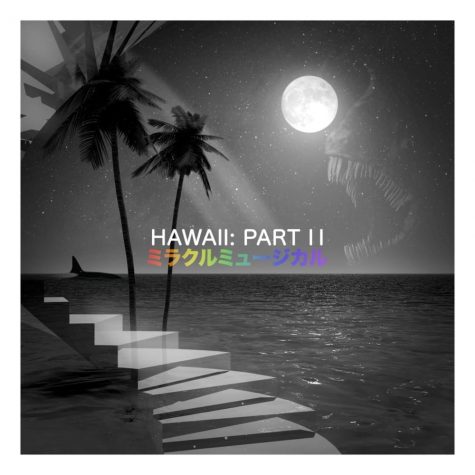
This album, which happens to be my favorite of all time, is an interesting one at that. While most of the world was watching the clock, this album silently released on December 12, 2012 at 12:12 pm. It seemed unassuming enough, with its experimental album cover and foreign band name. Indeed, the whole project seemed like it was destined to be forgotten, and for the most part it was. It was only recently that it garnered a bigger cult following in musical circles.
It has been the first and only project released by ミラクルミュージカル (Miracle Musical is the English translation). Its looks, name, and concept seem foreign and strange in nature, but in reality this album encapsulates a sound that is strangely familiar and nostalgic.
Now, let’s get into the album. The first song, Introduction to the Snow, is exactly that: an introduction to the album, and its musical and conceptual themes. This opener sets up the mood of the album, and although its strong suit is the ability to combine genres, there is an underlying orchestral theme that is set up nicely with this song.
This album thrives in combining old with new, but it is also great at switching up the genres from song to song.Take the second track from the album, Isle unto thyself, and compare it with the third track Black Rainbows. The former is a rather up-tempo, drum-oriented song that includes an intricate bass line, spectacular backing vocals, and a mirage of strings and synths scattered throughout. Compared to the rather sparse arrangement of Black Rainbows that predominantly features a mix of a deep, Hawaiian chant mixed with an almost floaty female lead that could easily fit into any Andrews Sisters’ record.
 The rest of the album follows suit with the eighth track Labyrinth featuring a very similar female lead. Although, instead of a Hawaiian chant, it includes rap verses, and the song itself is built off of barely audible motifs found in the song prior. All of track six is sung in both French and Japanese, and that is only the beginning of the creative chaos that is this album. In any case, this project is extremely varied in its instrumentation and genres, but more impressive than that is how cohesive the album feels as a whole. The production and attention to detail found in these tracks is absolutely insane.
The rest of the album follows suit with the eighth track Labyrinth featuring a very similar female lead. Although, instead of a Hawaiian chant, it includes rap verses, and the song itself is built off of barely audible motifs found in the song prior. All of track six is sung in both French and Japanese, and that is only the beginning of the creative chaos that is this album. In any case, this project is extremely varied in its instrumentation and genres, but more impressive than that is how cohesive the album feels as a whole. The production and attention to detail found in these tracks is absolutely insane.
The seventh track, The Mind Electric, is one of the musical highlights of this album in the sense that it is just so jammed packed with interesting ideas and musical motifs. It begins with the song played in reverse. I know this sounds weird, but let me explain. They essentially took an earlier alternative version of the song, put it in reverse, and then edited it with little piano bits and other interesting musical ideas.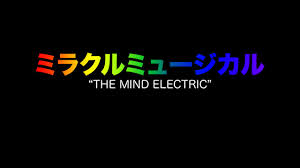
To begin with, I have never even heard of starting a song reversed and then playing the non-reversed section right afterwards, but even crazier than that, is that the reversed part doesn’t match up with the normal section. They completely changed it up; the two parts are totally different from each other… which just blows my mind. How could someone think of that? Now, besides the interesting beginning, the rest of the song is also insane. It features a wide array of instruments and tempo changes that are almost never found in modern music. The edits and techniques used in this song are just so out there that I am amazed that they were able to think of it. Crazier than that, this song is only a footnote in the musical chaos that is this project.
The rest of the album, although not as insane as The Mind Electric, is equally well put together and sounds amazing with a nice pair of headphones. The eclectic mix of strings and piano paired with bass and synths mix beautifully together, but what impresses me the most is how one man’s musical dreams and ambition became something absolutely incredible.
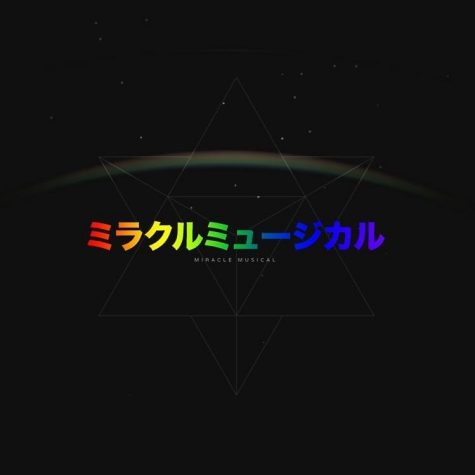 Much like the band name suggests, I believe that the album set up like a musical whose story nobody really knows. Although the album is full of differing genres and musical ideas, they all share a similar themes and concepts. They not only harken to olden times with their use of strings, they also invoke days gone by with their subject matter itself. The fourth track, White Ball, is about exactly that: a ball, which is typically synonymous with the Victorian era. Outside the lyrical themes of yesterday, the rest of the album invokes the genre that I call science fantasy.
Much like the band name suggests, I believe that the album set up like a musical whose story nobody really knows. Although the album is full of differing genres and musical ideas, they all share a similar themes and concepts. They not only harken to olden times with their use of strings, they also invoke days gone by with their subject matter itself. The fourth track, White Ball, is about exactly that: a ball, which is typically synonymous with the Victorian era. Outside the lyrical themes of yesterday, the rest of the album invokes the genre that I call science fantasy.
Take the song, Time Machine, which as you can guess is about time travel. Isle unto thyself, Stranded Lullaby, and Dream Sweet in Sea Major all involve fantastical stories that involve the sea, and the sense of adventure portrayed in each of these songs are all entirely unique. These songs reminisce on the days of undiscovered lands when the world was still young. The rest of the album falls more on the science side of this newly coined science fantasy genre, but whatever the lyrical connotation, all of the songs on the album are entirely unique. However, when put together, they form a wonderful listening experience.
Now, when I said that Hawaii: Part II was the band’s only musical venture, I was only partially right. Released two years after the first album, 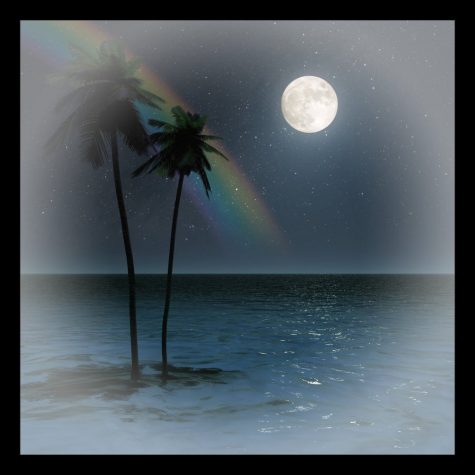 Hawaii: Part II Pt.II was a project comprised of instrumental and alternative versions of the tracks found on the previous album, along with early demos of each song. The new release, in my opinion, really broke down the chaos and mystique of the album and showcased how much time and care was put into this project. The instrumentals really highlight the musical prowess that I under appreciated when I first listened to it.
Hawaii: Part II Pt.II was a project comprised of instrumental and alternative versions of the tracks found on the previous album, along with early demos of each song. The new release, in my opinion, really broke down the chaos and mystique of the album and showcased how much time and care was put into this project. The instrumentals really highlight the musical prowess that I under appreciated when I first listened to it.
When you compare the early demos with the finished product, it is like night and day. Although, there is a certain charm to the under-produced almost raw state of these songs that I enjoy so much. In the end, both the Hawaii: Part II and Hawaii: Part II Pt.II gives me inspiration and a musical experience unlike anything I have ever experienced. As I said before, much like the band’s name, I believe that this album is set up like a musical whose story I don’t think anybody will truly know. I’m just glad that I was able to listen in and appreciate the genre-breaking experience that is Hawaii: Part II.

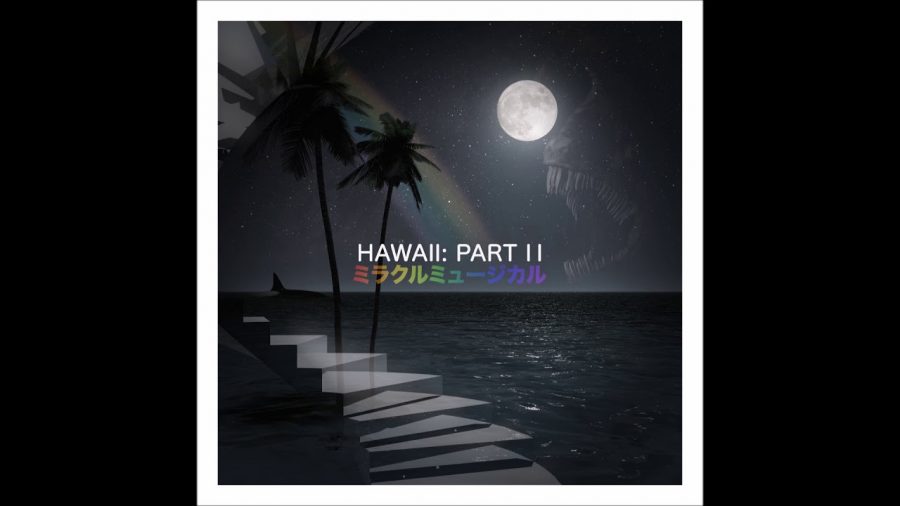




Rin • Feb 20, 2022 at 9:20 pm
I generally agree with altComix’s interpretation, but have a little bit of a different one based on each of the voices being different characters.
Introduction to the snow: an introduction to the album. No plot significance.
Isle unto Thyself: Simon and Poppy (I thought I heard her say “poppy” in the background of which ball, so I’ll say her name is Poppy) meet after Simon moves to Hawaii to escape some sort of toxic relationship, and they become friends. Poppy is also in a toxic relationship based on the line “and could WE heal”, and he maybe has a bit of a crush on her.
Black Rainbows: after hanging out with Simon for a little bit, Poppy realizes she has a crush on him.
White Ball: Simon and Poppy go to a ball and finally hook up, or at least flirt a little. You can also hear Poppy’s boyfriend in the background, which means he probably found out about the two of them.
Murders: Poppy’s boyfriend kills her in the forest out of rage because she cheated (damn dude). Simon just so happens to be the one to find her.
宇宙ステーションのレブル7 (space station level 7): Poppy is taken to the gates of heaven by an angel (the singer)
The Mind Electric: Poppy’s boyfriend frames him for her murder and in an attempt to get off easy, Simon pleads insanity, this works too well, as he’s sentenced to electroshock therapy that actually makes him insane
Labyrinth: Poppy’s boyfriend is haunted by her (her ghost? Hallucinations of her? Maybe her voice in this song is just used to portray guilt? Idk) and he feels like he’s trapped. Also he’s maybe dead and in hell if you want to take the whole labyrinth thing literally but it’s a joe hawley song dude nothing is literal.
Time Machine: the angel dude from earlier visits Simon at Poppy’s request to check on him and thinks about what would happen if they could turn back time and reverse Poppy’s death. And also maybe Simon sees him and takes it as a sign to do what he does in stranded lullaby but I don’t really have any proof of this.
Stranded Lullaby: Simon can’t stand living in Hawaii anymore as everything reminds him of Poppy, and he heads out to sea. This is a terrible idea.
Dream Sweet in Sea Major: Simon feeds himself to sirens and reunites with Poppy. They live (die?) happily ever after.
So yeah a little bit different than the commonly accepted storyline. It does make time machine fit in a little awkwardly, but I don’t really see any point in switching voices if not to show a switch between perspectives. But hey that’s just a theory. A game theory
Anabella Novellino • Aug 21, 2022 at 12:19 pm
I think in time machine Simon is escaping the insane asylum by himself. The track being called time machine as he attempts to go back to the way things were. I believe he escaped in a boat but then of course because he is now insane he has lost all sense of direction and is now lost at sea I belive that’s then what’s going on in “stranded lullaby” as he dies in the middle of the ocean and then eaten by sirens.
Steve Schappell • Feb 9, 2022 at 12:35 pm
I ran a search for the meaning behind the album and cam across this site and review. I was introduced to this by my stepson, and was blown away by the musical composition, style and lyrical journey. AltComix sums up the story pretty well. It went to the top of my album chart when I first heard it. I branched from this into Tally Hall and other similar artists and bands. Thanks for posting this.
altComix • Nov 17, 2020 at 10:42 pm
Actually, the songs portray a story entirely if you look at the meaning of the lyrics. With the introduction of our main character Simon, but only stated in one of the mind electric demos (isle unto thyself). followed by our protagonists love interest (black rainbows). white ball tells us of them hitting it off and falling in love, but unfortunately Simons love interest is killed in the forest and is framed for it (murders).The love interest enters heaven with (Space station level seven) Simon is tried for framed murder but falsely pleads insanity, he gets sent to the infirmary for shock therapy and actually turns insane from the shock therapy (the mind electric). labyrinth tells us him feeling lost and guilty (even though Simon didn’t kill his love interest) with time machine showing us that he wants to fix his past mistakes. During somewhere between time machine and (stranded lullaby) he steals a boat and escapes prison and the song describes his boring time at sea. (dream sweet in sea major) ends off our story with Simon falling prey to sirens and drowning to death, joining his lover in the afterlife.
J.B. • Nov 17, 2020 at 11:17 am
I just discovered this album. It has quickly rose to be one of my favorite albums of all time. I was just googling to see if there is any information about this album and I came across this review. I agree with you whole heartily and I am happy that there are others that appreciate this album.
cal • Oct 11, 2020 at 8:18 am
most of ミラクルミュージカル members also were part of the band tally hall. you should check them out too